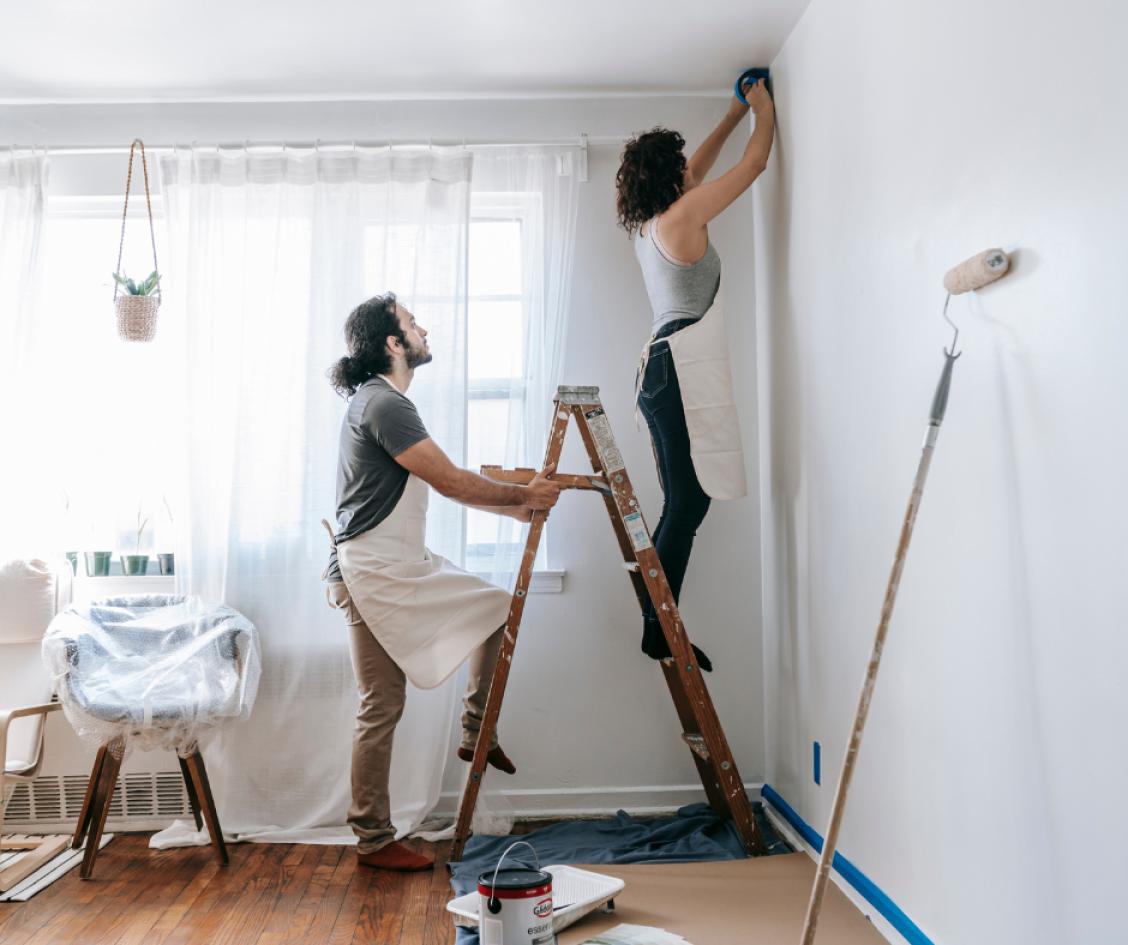Safety Tips for Painting

Painting your home can be an exciting and rewarding project, but it also involves certain risks that need to be managed carefully to ensure the safety of both yourself and your living environment. Proper ventilation, the use of respiratory protection, safe handling and disposal of paints and solvents, and effective measures for preventing and cleaning up spills and accidents are essential components of a safe painting experience.
Proper Ventilation and Respiratory Protection
One of the most crucial aspects of painting safety is ensuring adequate ventilation. Paints, especially those containing volatile organic compounds (VOCs), can release harmful fumes that pose serious health risks if inhaled over prolonged periods. These fumes can cause headaches, dizziness, respiratory problems, and other health issues.
To minimize exposure to these fumes, always paint in well-ventilated areas. Open windows and doors to allow fresh air to circulate, and use fans to help disperse fumes. If you're painting in a small or enclosed space, consider using an exhaust fan to draw the fumes out of the room.
In addition to ventilation, using respiratory protection is essential, especially when working with solvent-based paints, primers, or paint strippers. A respirator mask with a filter designed to block paint fumes can protect your lungs from inhaling harmful particles. Make sure the mask fits snugly and that the filters are appropriate for the type of paint you are using. For water-based paints with lower VOC levels, a basic dust mask may suffice, but always refer to the paint manufacturer’s recommendations for the best protection.
Safe Handling and Disposal of Paints and Solvents
Handling paints and solvents with care is paramount to avoid health risks and environmental harm. Always read and follow the manufacturer’s instructions and safety guidelines on the labels of paint cans and solvent containers. When pouring or mixing paints and solvents, do so in a well-ventilated area and wear appropriate protective gear, such as gloves and safety goggles, to prevent skin and eye contact.
Never smoke or use open flames near paints and solvents, as they are often highly flammable. Store them in their original containers, tightly sealed, and keep them in a cool, dry place away from direct sunlight and out of reach of children and pets.
Disposal of leftover paints and solvents must be done responsibly to prevent environmental contamination. Never pour paint or solvents down the drain or throw them in regular trash. Check with your local waste management facility for guidelines on disposing of hazardous materials. Many communities have special collection days for household hazardous waste or designated drop-off locations where you can safely dispose of old paint and solvents.
Preventing and Cleaning Up Spills and Accidents
Even with the best precautions, spills and accidents can happen. Being prepared to handle them quickly and efficiently can minimize damage and ensure safety. Before you begin painting, cover floors, furniture, and any other surfaces that you want to protect with drop cloths or plastic sheeting. Keep all painting supplies organized and within easy reach to reduce the risk of accidental spills.
If a spill does occur, act quickly. For liquid spills, use absorbent materials such as rags, paper towels, or kitty litter to soak up the paint. Avoid wiping, as this can spread the spill further. Once the bulk of the spill is absorbed, clean the area with soap and water or an appropriate cleaning solution recommended by the paint manufacturer.
For solvent spills, immediately ventilate the area to disperse fumes. Use absorbent materials to contain the spill, and then clean the surface according to the safety guidelines on the solvent container. Dispose of used absorbent materials in accordance with local hazardous waste disposal regulations.
In the case of accidental exposure to paint or solvents on your skin or in your eyes, follow the first aid instructions provided on the product label. Generally, this involves rinsing the affected area with plenty of water for at least 15 minutes and seeking medical attention if necessary.
Painting safety requires diligent attention to proper ventilation and respiratory protection, careful handling and disposal of paints and solvents, and prompt, effective action in case of spills and accidents. By following these safety tips, you can protect yourself and your home, ensuring that your painting project is both successful and safe. Taking the time to prepare and adhere to these safety measures will not only safeguard your health but also contribute to a more enjoyable and stress-free painting experience.


